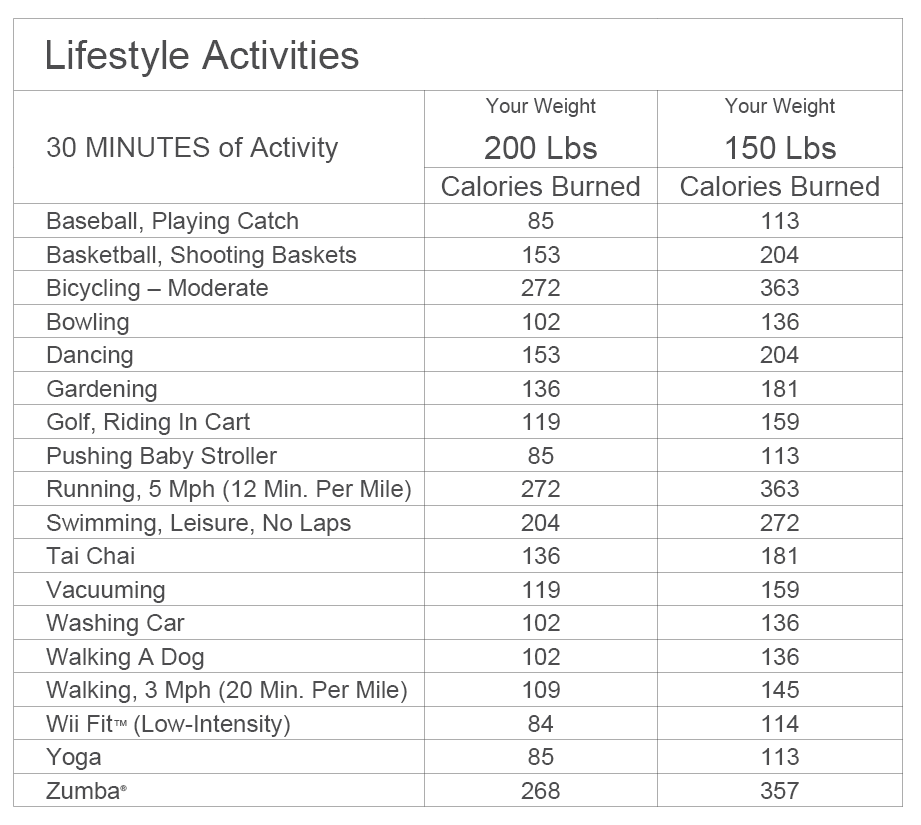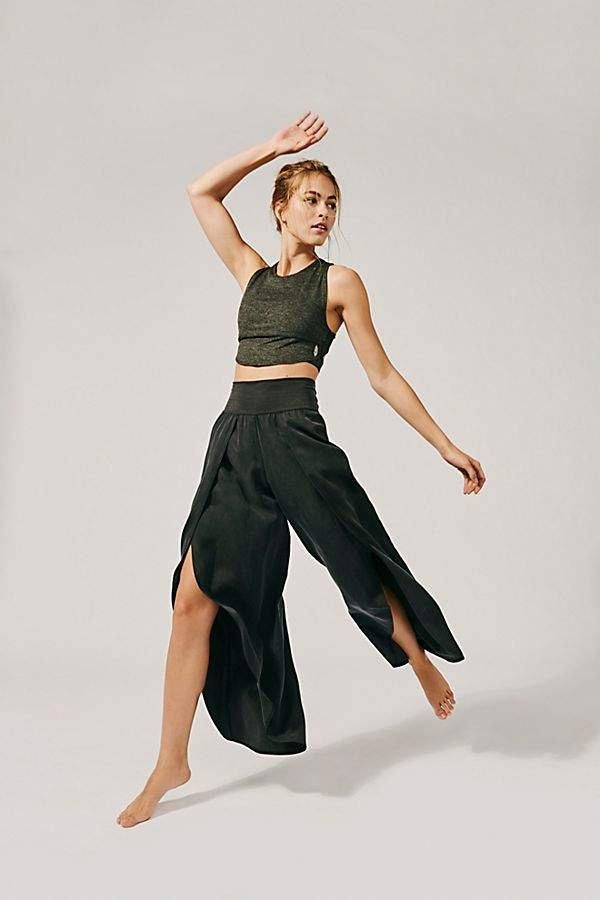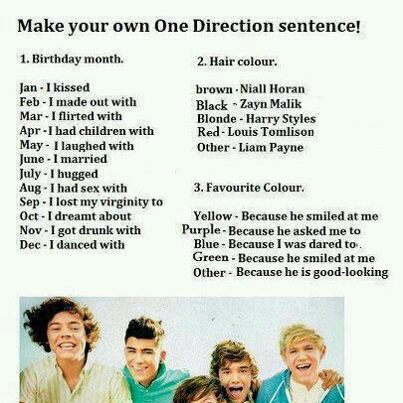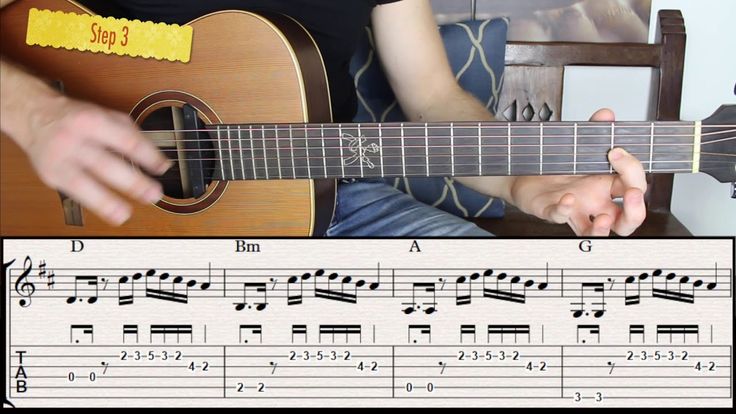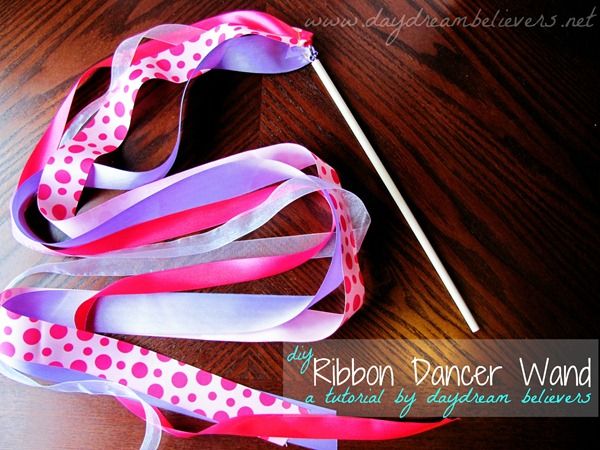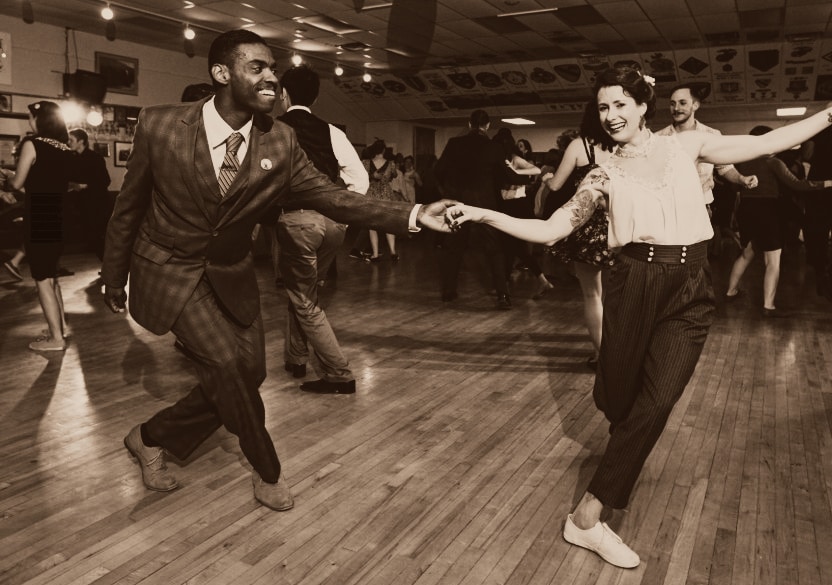How to dance ballet folklorico
Intermediate Level | balletfolklorico
Students should always warm up before beginning dance. Please our section on Warms Ups before starting any dance practice.
Intermediate students are ready to master more complex versions of steps, faldeos, and turns.
STARTING POSITIONS - Students should begin with excellent posición inicial (starting position) with an erect posture, as if a string was being pulled upward through the body and out the head, and feet and arms ready. They must demonstrate spatial knowledge such as the Fila (vertical) and Línea (horizontal) positions.
Students may wish to look at the following videos to refresh themselves on basic steps, including the simple zapateado and carretilla. You can also look at the Beginner Curriculum for videos.
Folklorico Company with Kareli Montoya- Basic Tutorial (English)
Intermediate Steps include:
-
Zapateado tres with different styles:
-
Heel/toe
-
Flat
-
Puntas
-
-
Gatillos - stomp with heel hitting on the second beat.
-
Huachapeo - both the cepilleo & escobilleo
-
Paso de Borracho - crossing the foot behind and stomping.
-
Tijeras – Cutting the air with both feet in a sliding motion done either high or low. (Note: the low version of this step is used in the song, La Raspa.)
-
Tornillo - twist the body, upper body part is opposite to lower body part.
Be sure to practice the following steps leading with both the right and left feet.
After mastering the basic faldeo, you are ready to learn regional differences in this arm/skirt movement:
Intermediate faldeos include:
-
Nayarit - with arms held high, at the head or even behind the head for certain movements, holding the skirt for women. (Spanish video) (English video)
-
Jalisco - arms at the shoulder level holding the skirt for women. Men place hands behind the back. (Spanish video) (English video)
-
Colima - arms at about 45 degrees from the shoulders, holding the skirt for women.
 Men hold hands behind the back. (Spanish) video (English video)
Men hold hands behind the back. (Spanish) video (English video) -
Veracruz - arms extended out at the side with the palms of your hands up holding the skirt and making small movements. Men hold arms straight down besides the body. (Spanish video ) (English video)
-
Polka - arms bent at the waist for women. Men bend arms and place hands on the waist/belt buckle. (Spanish video) (English video)
Resources from Ballet Folklorico Ritmo Alegre:
Video - Instructions for Jalisco Faldeo
https://youtu.be/gph5rOMAA2k
Video - Instructions for Faldeo of Nayarit
https://youtu.be/lfExU2qyjTA
Video - Instructions for Faldeo of Veracruz
https://youtu.be/UDIqBXirEmY
Video - Instructions for Zapateado de Tres Step
https://youtu.be/FsxKcMQ5sig
Video - Instructions for Turns and Spins
https://youtu.be/IoAnSpShyzo
Ballet Folklorico de los Angeles Tutorial on Basic Steps: carretillas, zapateado de tres, cepilleo - Jalisco style
https://www.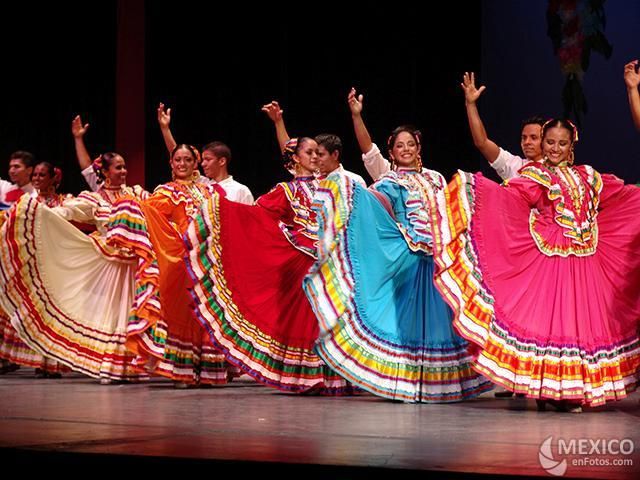 youtube.com/watch?v=0b8MX4atrRo&index=7&list=PLi_I5aPDeU-dn9mc4b5cDslSD-9T1Ym65
youtube.com/watch?v=0b8MX4atrRo&index=7&list=PLi_I5aPDeU-dn9mc4b5cDslSD-9T1Ym65
Ballet Folklórico de los Angeles (English)
Tutorial- Turns Jalisco & Colima style
https://www.youtube.com/watch?v=DXU9ZWErAk4&lc=Ugi3meWA-7mmkXgCoAEC
Beginner Level | balletfolklorico
Students should always warm up before beginning dance. Please see our section on Warms Ups before starting any dance practice.
CLOTHING - Students should dance in comfortable clothes. Dancers wear leotard and tights or stretchy clothing so that they can clearly see the lines and shapes their bodies make and protect their muscles from injuries!
Hair should be in a bun so it is not a distraction.
PRACTICE SKIRTS - In order to build arm strength and to execute faldeos (arm movements) correctly, students will want to wear practice skirts when they dance. (Josefina practice skirts can be purchased online from Mariachi Connection for about $40)
How to put on a practice skirt
To avoid tearing/damaging your skirts, put your skirt through over the head, if you can manage.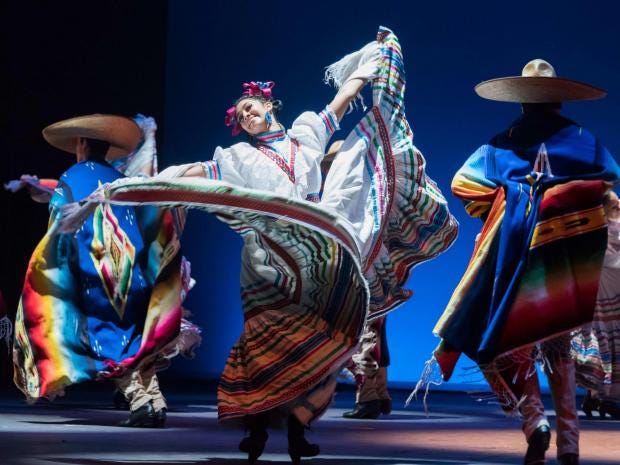
First tie the back strings in the front at waist level. Don't tie so tightly you can't breath easily, but your skirt will slip down if it isn't just right. Then tie up the front strings in the back.
See the video on the right for tips on putting on your practice skirt.
Beginners should master these basic building blocks of Ballet Folklorico before moving on to more complicated steps or faldeos:
-
Faldeo - skirt movement involving grasping with fingers, rotating wrist and arms.
-
Zapateado de tres (the basic steps of Ballet Folklorico in three alternating stomps with your feet)
-
Vueltas (turns)– a small well-shaped or round circle made both to the right and the left.
-
Giros (spins) – turning on the toes, but staying the same spot.
HOW TO PERFORM A FALDEO
A faldeo is a basic move that involves swirling large skirts (Jalisco, for example) with the arms to create a pleasing undulating pattern. It is a key move and should be mastered before adding footwork.
It is a key move and should be mastered before adding footwork.
Extend arms parallel to the ground.
-
Make grasping moves with hands/fingers x 10.
-
Flip wrists up and down approximately 10 times.
-
Turn wrists around in circles in one direction and then the other x 10.
-
Rotate entire arms in small circles x 10.
-
Bend arms at the elbows and make small circles with the hands. 4-5 forward and 4-5 backwards.
-
Rotate entire arms in big circles that encompass the shoulder x 5-10.
-
Raise arms bent at the elbows to the chest and turn gently to right and left to stretch waist and back x 5-10.
-
With wrists flexed, bend to the left and right x 5 on each side, alternating one side and then the other .
Holding the skirt
Grasp with your fingers one side of the skirt near where ruffles begin. Have your palms face up. Do not hyper extend the arm.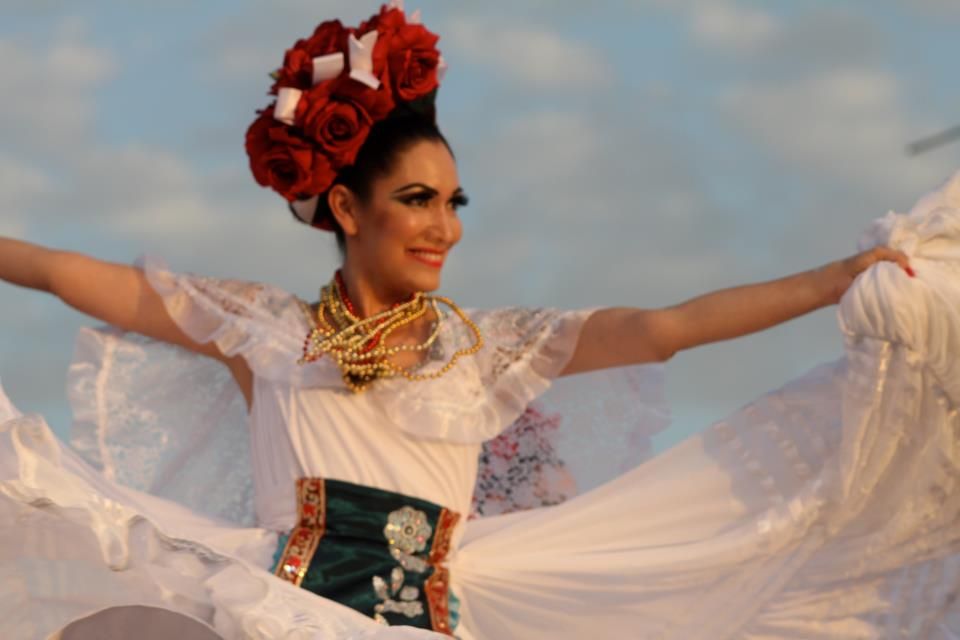 Your elbow should be slightly bent. Keep the skirt away from the body. If it gets too close you lose the shape. Practice gathering with one and then both hands.
Your elbow should be slightly bent. Keep the skirt away from the body. If it gets too close you lose the shape. Practice gathering with one and then both hands.
One-Handed Faldeo
Initiate movement of the skirt with a wrist flip; arms should be extended but not hyper extended. Flip the wrist back and forth (shoulder level. Don’t cover the face. Minimize shoulder movement. Arm should be straight in back when extended at the full range of the movement.
Double-Armed Faldeo
Grasp with fingers the ruffle with both hands, keep shoulders down and “quiet.” Initiate the wrist flip in both hands at the same time, making smooth faldeos of the same shape and size with both hands.
This movement is sometimes called a butterfly faldeo as it mimics the wings of a butterfly going up and down on both sides at the same time.
Alternating Faldeo
Alternate the wrist flips from side to side. When the right wrist is in front, the left is in the rear and so on.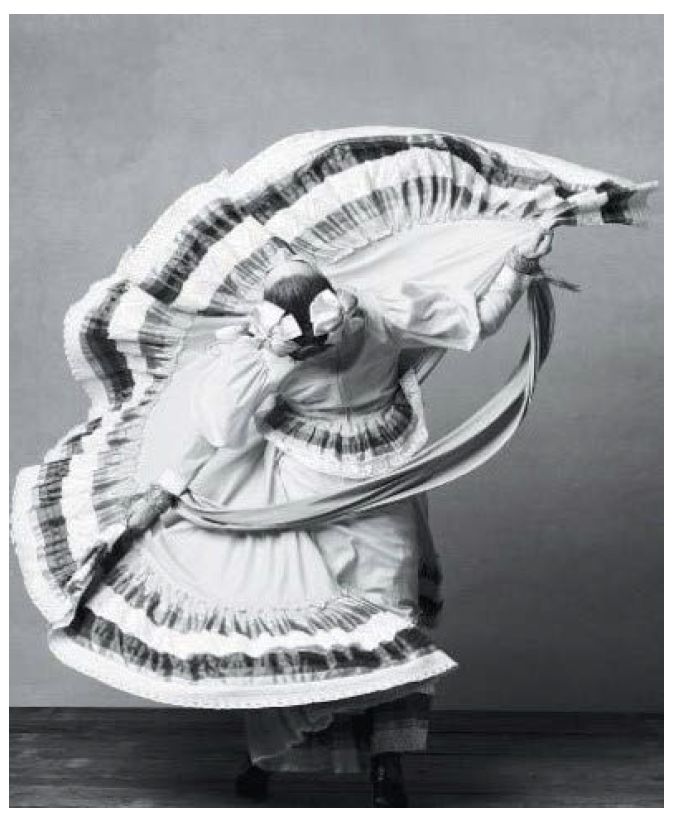 The skirt should move constantly. Keep the skirt away from the body and keep shoulder movement to a minimum.
The skirt should move constantly. Keep the skirt away from the body and keep shoulder movement to a minimum.
Steps:
Zapateado de Tres
Zapateado means to tap dance and comes from the Spanish verb zapatear – to stomp or drum. Thus, zapateado de tres, means to tap or stomp three counts. These rapid small steps, made almost in place, are the basic building blocks of dance. You’ll find them in El Son de la Negra, for example.
With the first step make a plie as you lift the knee and make the first step. Follow with a second and third step, stomp stronger number 1 stomp (Note: Some regions require you keep the feet completely flat. Jalisco and Colima use a zapateado with a heel (con taco’n) hands are at the waist, with elbows bent.
What does it convey? At times dancers use zapateados to “show off” or attract attention as part of storytelling.
Drills:
Vueltas – Turns
Walk your body to your right or left making a well rounded small circle.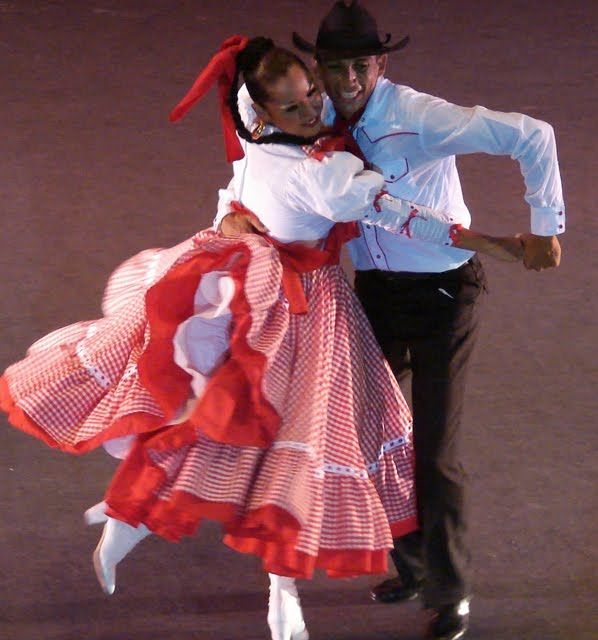
Resources:
Giro (spin) -
Move your body to your right or left making a pivot with one leg while the other. One leg is lifted with the movement.
● Drills - Practice slowly first with 4 times stopping ¼ of the 360 spin. Then increase speed.
Resources:
How to put on a practice skirt & perform basic arm movements (faldeos) with a Jalisco skirt.
Faldeo 101 with Kareli Montoya. (English)
https://www.youtube.com/watch?v=Oqp0QoeBmhw
Video – Faldeo tutorial 101, Ballet Folklorico de Los Angeles: https://www.youtube.com/watch?v=LjYbagZBXEM
Video – Instructions for Jalisco Faldeo (by Ballet Folklorico Artistic Director Luisa Zaragoza): https://youtu.be/gph5rOMAA2k
Video – Faldeo tutorial 101 #2,
Ballet Folklorico de Los Angeles:
https://www.youtube.com/watch?v=yfmgTXd1D20
Resources:
Zapateado de Tres (Spanish) UPN Acambay, Edo.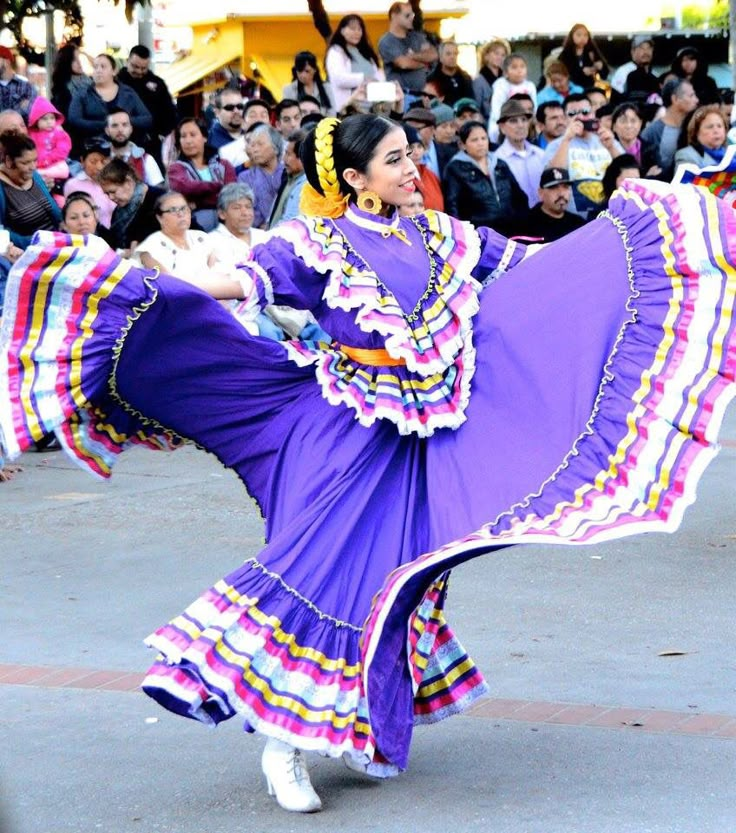 de México-Brenda
de México-Brenda
https://www.youtube.com/watch?v=Oqp0QoeBmhw
FACEBOOK-Ballet Folklórico de los Angeles
Tutorial Zapateado de Tres (English and Spanish)
https://www.facebook.com/DancingWithKareli/videos/818359835003808/
2.1 Folk dance
folklore dance implies the participation of the audience, in it captures the main features character and temperament of the creator his people. It's usually the dance of the anonymous origin, passed down from generation to a generation. Although the folklore dance can be performed in cities, the origins its almost always associated with rural terrain. Despite the differences historical, folklore dances from different countries have much in common in rhythmic structure and pattern movements. These differences are sometimes determined by geographic conditions. For example, the dances of the highlanders of one country may be more like the dances of the highlanders of other countries than the dances the inhabitants of the plains in the same country.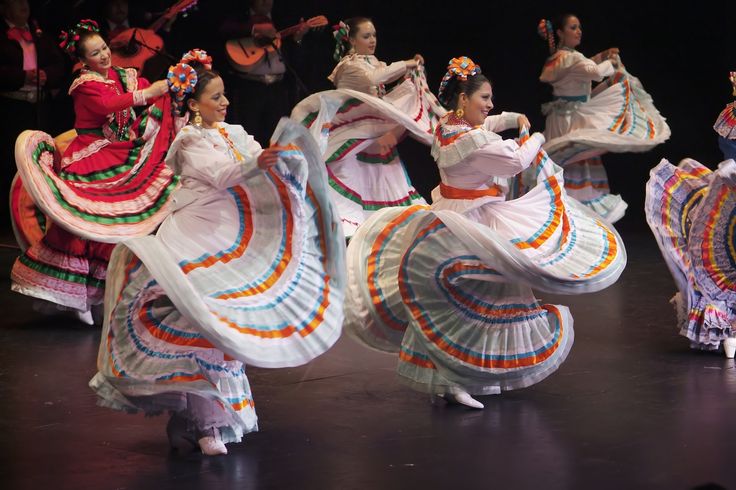
Reel dance the US state of Virginia is close round dance of many other countries. Mazurka with its characteristic triplets embodies the Polish character, while like a polka with its abrupt rhythm - the spirit Czech people. Čardas, consisting of two parts -- slow circular dance of men and fiery pair dance -- corresponds to the general idea about the Hungarian character, with its unaccountable longing and violent passions. Alpine a form of shuplattler, courtship dance, common in Bavarian and Austrian Alps. This interesting folk dance consists in stamping the feet, snapping heels and clapping on hips and knees; moreover, in this dancing man jumping over crouched partner, and she is spinning under by his hand.
Some folklore dances are a reminder of the ancient fertility cults, in which these dances originated. So, dance around Maypole welcomes the awakening nature. This dance is typical for all Europe - from Spain to Norway, and his origins can be traced back to Greek dithyrambah during the Dionysian festivities. Sword dancing originated from pagan rite imitating the struggle between winter and summer; they are also related with ancient Greek war dance. Scottish male single dance with swords is one of the most famous examples of this type.
Sword dancing originated from pagan rite imitating the struggle between winter and summer; they are also related with ancient Greek war dance. Scottish male single dance with swords is one of the most famous examples of this type.
folklore motifs often play a large role in ballet. FROM 1940s began to spread fascination with authentic, ethnographically authentic dance folklore. There are many professional dance troupes that have reached international fame, demonstrating stage forms of folk dances, for example, the Russian Folk Ensemble dance by Igor Moiseev, Ensemble of Ukrainian dance, "Inbal" ensemble in Israel, "Folk Ballet" of Mexico, Bayanihan in the Philippines.
Ballet - higher stage of choreography, in which the dance art rises to the level musical stage performance, arose as a court-aristocratic art much later than dance, in the XV-XVI centuries. The term "ballet" appeared in Renaissance Italy in the 16th century and denoted not a performance, but a dance episode.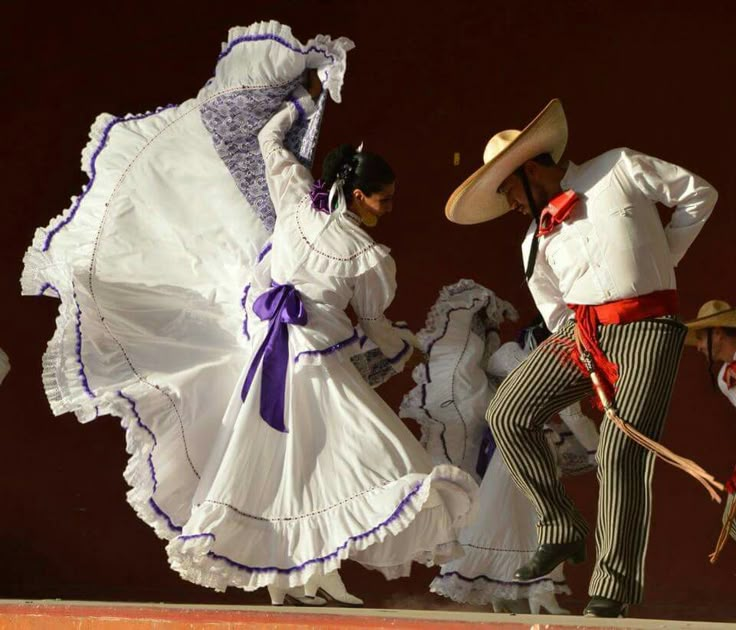 Ballet is a synthetic art in which dance is the main expressive means of ballet, closely related to music, with a dramatic basis - libretto, with scenography, with the work of a costume designer, lighting artist, etc. Ballet diverse: plot - classic narrative multi-act ballet, drama ballet; plotless - ballet-symphony, ballet-mood, miniature. By genre ballet can be comic, heroic, folklore. The 20th century brought new forms: jazz ballet, modern ballet.
Ballet is a synthetic art in which dance is the main expressive means of ballet, closely related to music, with a dramatic basis - libretto, with scenography, with the work of a costume designer, lighting artist, etc. Ballet diverse: plot - classic narrative multi-act ballet, drama ballet; plotless - ballet-symphony, ballet-mood, miniature. By genre ballet can be comic, heroic, folklore. The 20th century brought new forms: jazz ballet, modern ballet.
Ballet History XX century is characterized by processes assimilation of Russian traditions classical ballet with European ballet groups. Leading tendencies become metaphorical, plotless, symphonic, free rhythmoplasty, modern dance, elements folklore, household, sports, jazz vocabulary. In the second half XX century develops postmodern, into the arsenal whose expressive means included use of film and photo projections, effects of lighting, sound, electronic music, happening (participation of spectators in ballet), etc. The genre of contact appeared choreography when the dancer "contacts" with the objects on the stage and the stage itself. One-act miniature ballet dominates (short story, ballet-mood). countries the most developed choreographic cultures were UK, USA, France, USSR. an important role in the development world ballet dancers played second wave of Russian emigration (R. Nureyev, N. Makarova, M. Baryshnikov) and dancers Russian school, who worked in the West on contract (M. Plisetskaya, A. Asylmuratova, N. Ananiashvili, V. Malakhov, A. Ratmansky). In Germany, Holland, Sweden developed expressionist, then postmodern ballet.
One-act miniature ballet dominates (short story, ballet-mood). countries the most developed choreographic cultures were UK, USA, France, USSR. an important role in the development world ballet dancers played second wave of Russian emigration (R. Nureyev, N. Makarova, M. Baryshnikov) and dancers Russian school, who worked in the West on contract (M. Plisetskaya, A. Asylmuratova, N. Ananiashvili, V. Malakhov, A. Ratmansky). In Germany, Holland, Sweden developed expressionist, then postmodern ballet.
In the 1920s-1930s center of European ballet art became France, where until 1929 she worked troupe "Russian Ballet" Diaghilev and the teams that have grown up on its basis. In the second half of the 20th century, France gave ballet of such original choreographers, like Maurice Béjart and Roland Petit.
In the years 1930-1959, with a break for the war years 1944-1947, the troupe The Paris Opera was headed by Serge Lifar, staged 50 ballets there in the style neoclassicism, modernizing classical dance and combining it with elements of free, folklore, domestic dance. The most famous ballerinas of that time: Claude Bessy, student of Lifar, as well as lyrical dancer Yvette Chauvire, who became famous performance of the part of Giselle.
The most famous ballerinas of that time: Claude Bessy, student of Lifar, as well as lyrical dancer Yvette Chauvire, who became famous performance of the part of Giselle.
Choreographic innovations developed outside the walls of the Opera, although Balanchine ballets have been staged there since the 1970s, D. Robbins, G. Tetley, P. Taylor. In 1983-1989 director of the ballet troupe of the Paris Opera again became a native of Russia, Soviet dancer R.Kh. Nuriev. He staged a number of classical ballets there, and also invited to cooperate one of the greatest choreographers modernity of W. Forsythe, which contributed a fresh stream into the life of a dance troupe theatre, which by that time had become to the ballet museum. From opera dancers famous for Sylvie Guillet, Isabelle Guerin. Outstanding Classic dancer Patrick Dupont directed the troupe at 1990-1995 years.
Main achievement American ballet - creativity George Balanchine, a native of Russia, graduate of the Petrograd Theater schools. He created a new direction in choreography - symphonic plotless neoclassical ballet, self-sufficient choreographic action (sometimes without libretto, scenography and costumes). On the work of Balanchine also influenced by the Danish school of choreography aspiring to subtleties, lively light footwork (the so-called. Bournonville skids), quick change directions and rising rhythms movements. The largest dance US theaters - "New York City Balle" and "American Balle Theater" were born in result of the interaction of the Russian classical and American (dance modern, acrobatic, jazz, household vocabulary) traditions. leading trend American ballet remains plotless and metaphorical, chamber one-act ballet.
He created a new direction in choreography - symphonic plotless neoclassical ballet, self-sufficient choreographic action (sometimes without libretto, scenography and costumes). On the work of Balanchine also influenced by the Danish school of choreography aspiring to subtleties, lively light footwork (the so-called. Bournonville skids), quick change directions and rising rhythms movements. The largest dance US theaters - "New York City Balle" and "American Balle Theater" were born in result of the interaction of the Russian classical and American (dance modern, acrobatic, jazz, household vocabulary) traditions. leading trend American ballet remains plotless and metaphorical, chamber one-act ballet.
Ballet of countries with rich choreographic past (Austria, Italy) currently is on the periphery of ballet ideas. The musical theaters of Vienna and Milan give back opera priority. Although in Italy there is centuries-old school of virtuoso dance, but talented ballerinas realize themselves, usually abroad (Carla Fracci, Alessandra Ferrucci), and the Italian ballet is on the brink of survival.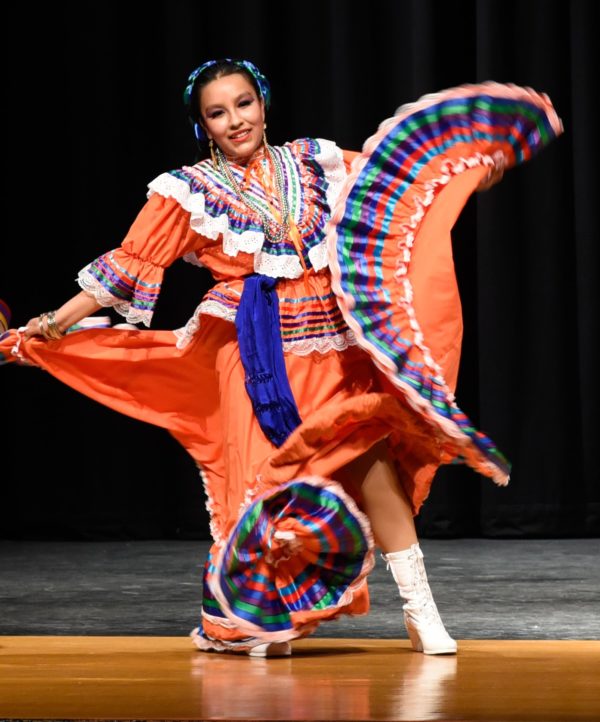
In the second half XX century ballet has penetrated into countries where strong folk dance traditions. In Spain appeared "Ballet lyrico nacional" under management of a former artist "Netherlands Dance Theatre" Nacho Duato, originated in Latin America "National Ballet of Cuba", created by ballerina "American Balle" Alicia Alonso, Argentine Ballet, founded dancer of the same theater Julio Bocca. Ballet companies appeared in Japan, where popular and classical ballet, and modern dance: tokyo ballet group "KARAS" Saburo Teshidawa are open all directions, from classical to performance.
Folk Ballet of Mexico City - The Reklama
The Ballet Folklórico de México de Amalia Hernández will tour the Auditorium Theater in Chicago from February 12 to 14 as part of the annual International Dance Series. Performances in Chicago are dated for the seventieth anniversary from the date of formation of the company. The first two performances (February 12 at 7.30 pm; February 13, 3.
00 pm) will have a full program, the third (February 14, 11.00 am) with a shortened, sixty-minute version (one-hour student matinee). The concert program includes nine compositions.
“ Aztecas (Hijos del sol) ”. Using various elements of sculptures, ceramics, drawings, the choreographer Amalia Hernandez tried to reconstruct the ritual dances of the Aztecs. The composition includes four dances: the Dance of the Priests in honor of Montezuma II, the Dance of the Girls, the Dance of War and the Dance of Celebration.
“ Sones Antiguos de Michoacán ”. A brilliant mosaic of Michoacan dances and songs is one of Hernandez's most important compositions. This work changed the history of Mexican dance, since for the first time elements of modern and classical dances appeared in folk dance. The composition still remains in the repertoire of the Ballet Folklórico de México and serves as an inspiration for other Mexican folk dance groups.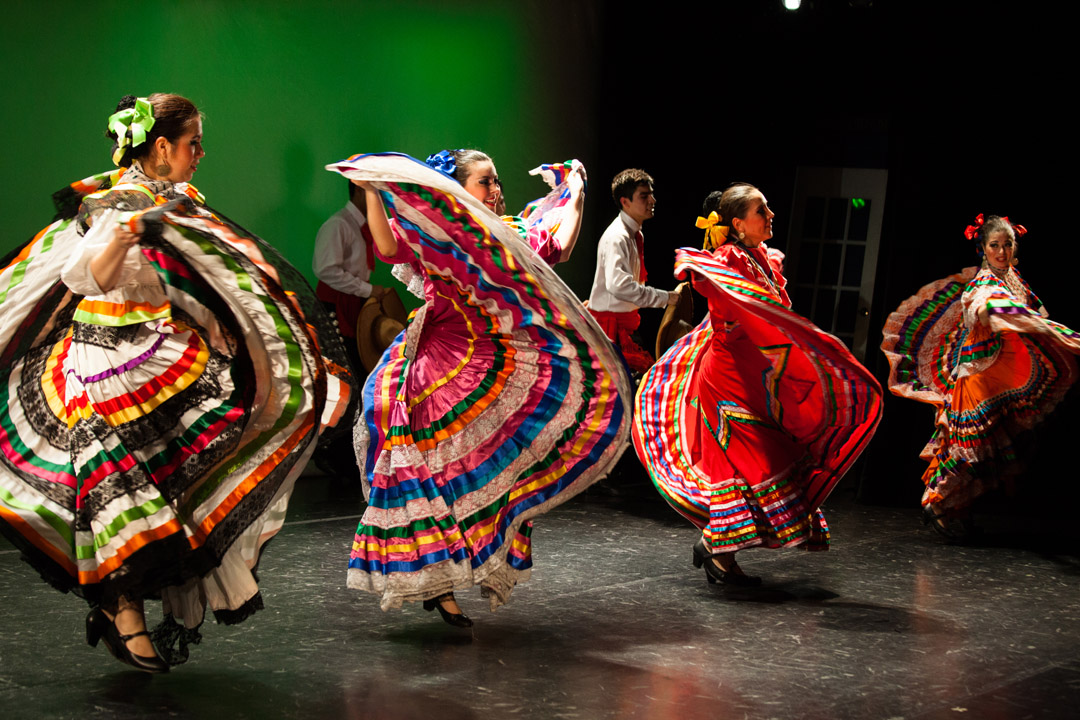
“ Tarima de Tixtla ”. One of the most colorful and cheerful compositions in the troupe's repertoire. Based on the original dances of the State of Guerrero. A whirlwind of skirts and the echo of dancers' tapping shoes shakes the wooden podium.
“ La Revolución ”. The composition is dedicated to the "adelitas" - women who played a decisive role in the Mexican revolution.
“ La Charreada ”. The composition celebrates the charriada, the art of horseback riding, in which men and women compete dressed in colorful Mexican costumes and adorned with silver studs. Charriada has been declared an Intangible Heritage of Humanity by UNESCO.
“ Fiesta en Tlacotalpan ”. A dance in which the influence of Spanish culture is noticeable, in particular, the art of flamenco.
“ La vida es un juego ”. The dance is based on traditional Mexican games that are often "controlled" by a charismatic devil who treats the characters like puppets and manipulates their fate.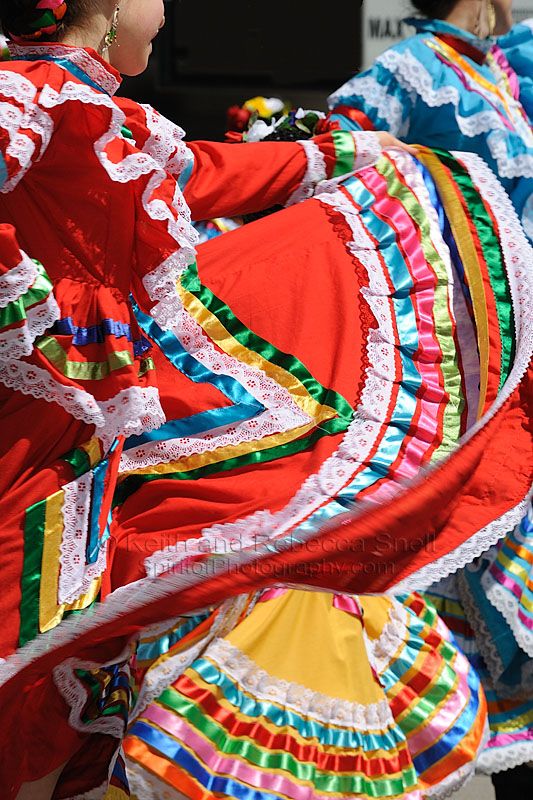
“ Danza del Venado ”. The deer dance is a ritual that reproduces the movements of the prey. Usually performed before hunting expeditions. The deer dance usually represents the state of Sonora and is considered an intangible cultural heritage by UNESCO.
“ Fiesta en Jalisco ”. The final composition of the evening is an ode to the state of Jalisco (in the language of the Aztecs - “sand valley”), its music, energetic and sophisticated dances in dazzling multi-colored costumes.
The Folk Ballet of Mexico City was founded in 1952 by the eminent dancer and choreographer Amalia Hernandez (1917-2000). From the first days of its existence, the troupe focused exclusively on traditional Mexican dances, but gradually the choreography became more complicated and folk dance movements were combined with elements of classical and modern ballets.
In 1959 the Ballet represented Mexico at the Pan American Games in Chicago. Fifty short compositions were performed at the concerts. It was after these tours that the Ballet got its current name and international prestige. The then president of Mexico, Adolfo López Mateos, took a particular interest in theater and offered support to make what he said was the best company in the world. So Chicago played a big role in the development of the theatre.
It was after these tours that the Ballet got its current name and international prestige. The then president of Mexico, Adolfo López Mateos, took a particular interest in theater and offered support to make what he said was the best company in the world. So Chicago played a big role in the development of the theatre.
Since October 1959, the National Institute of Fine Arts, located in the center of Mexico City, has become the home of the Folklore Ballet. At 19In 1961, the Folklore Ballet was awarded the First Prize at the World Festival of National Folk Dances in Paris. Since then, his worldwide fame began.
Amalia Hernandez's artistic heritage is preserved by more than one hundred and twenty original compositions created by her over several decades of creative activity. Hernandez is considered an ambassador of Mexican culture around the world. It was she who showed the world folk Mexican dances. Through movement, she was able to show the world the beauty of Mexico and tell her story from pre-Columbian times and Spanish influences to revolutionary change. Now the Mexico City Folklore Ballet is directed by Amalia Hernandez's daughter, Amalia the Younger.
Now the Mexico City Folklore Ballet is directed by Amalia Hernandez's daughter, Amalia the Younger.
Today, the Folklore Ballet of Mexico City has two choreographic and one choral studios, as well as two troupes - touring and stationary. For almost seventy years of its existence, the ballet has shown more than fifteen and a half thousand performances, the audience of which has become more than thirty million people. Bright, extravagant costumes, incendiary Mexican music, professional dancers - all this delights the audience in all countries where this ballet company performs on tour. However, you yourself know everything. The last time we saw the Folklore Ballet in Chicago was in November 2019of the year. The performances were a triumphant success. I'm sure the new tour in Chicago will not be an exception. “We are honored to once again show the Ballet Folklórico de México de Amalia Hernández in Chicago,” said Auditorium Theater CEO Rich Regan. “The concerts are not only loved by the city's Mexican community, but are a must-attend for all dance lovers.
